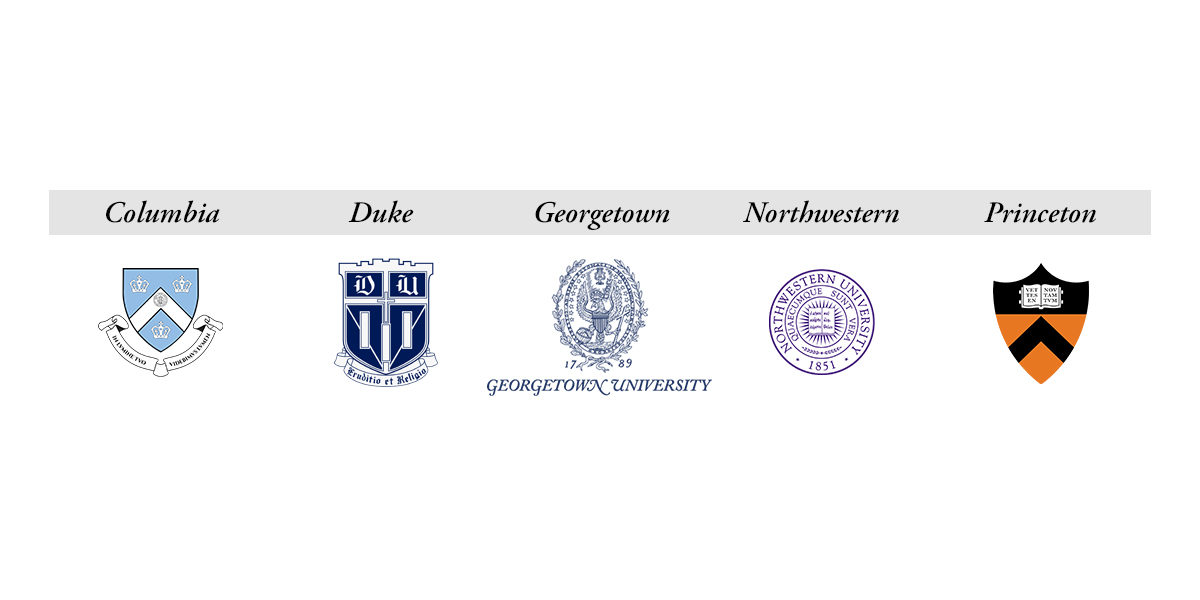When Columbia, Cornell, Duke, Georgetown, Northwestern, and Princeton came to town – Key Takeaways
What happens when Columbia, Cornell, Duke, Georgetown, Northwestern, and Princeton come together? Don’t let your mind take you too far;)
These prestigious universities were recently in Delhi for an admissions information session, a rewarding interaction with some highly energetic presentations. We attended this session with the mind to dig deeper into the admissions philosophy of these highly selective universities.
So, did we learn anything new? Yes and Yes.
There is something about the voice which makes even known facts sound fresh, putting everything in perspective. KNOWN because almost all objective details presented are easily available on the official university websites. These include details regarding the size of the school, geographical significance, international student population, campus experience, unique traditions, University resources, alumni connections, everything that will tie up to make your 4 years rich in learning. With plentiful easy to access information available to get you started, research is necessary to narrow down your list to 10-12 universities from among the 2,000 odd in the US and also to set the ball rolling to indicate an interest to your potential universities.
With this we want to highlight the THREE important takeaways from this session:
Demonstrated Interest: For all these Universities, India is in the top 3 nations that make up their international student population, a clear proof that they want you. They traveled to India to interact with you. They want to hear from you. By you, we mean you and only you, not your parents, teachers or counselors. Be mindful of this. Connect with these Universities on Facebook, follow them on Twitter, read their student blogs on their official website, email or call the designated admissions officer for India/Asia for any queries you might have. These are some of the best ways to learn about these Universities and to forge a connection with them. Trust us; they are very approachable, so do yourself this enormous favor and take the initiative to be in touch. All this groundwork will particularly help you with your Why University X? essay. All 6 universities minced no words in stressing that “Essays” are a critical differentiator in the admissions process. Every detail that you will learn about them during the research process will contribute heavily to reflecting your FIT with the University; the ultimate factor in admissions.
High school academics: In their words, “Academics will rarely distinguish you from the other applicants.” So, don’t overdo the SAT subject tests and AP exams with the underlying thought of bolstering your academic profile. First, be the best in all the subjects that your school has to offer, be at the top of your class and master your school curriculum. Then, if need be look at AP exams especially to show your potential interest in a major, if any, but not at the expense of them taking away time from your extracurricular activities. These Universities expect you to be good organizers and to balance your time well between academics and outside the classroom activities. Don’t ignore the fact that these Universities are looking for students who are highly engaged with their community and will keep a close eye on how you interact with your school resources and your community.
Similar yet Unique: While some of these Universities have a lot in common regarding their standardized testing requirements, financial aid policies, deadline options, it was interesting to hear each admissions officer talk about their unique aspects. What leaped out was how every University is made up of different schools/colleges offering multitudes of majors and minors. Navigating this structure helps during application. For instance, Columbia University requires you to apply either to Columbia College or the College of Engineering. The University as a whole is top ranked in humanities and social sciences. The core curriculum that makes up about one-third of the credits required to graduate, defines the Columbia curriculum. Duke too asks the applicant to apply either to their college of arts and science (comprising 80% of the students) or their school of engineering. Georgetown, with its 4 schools, has a separate and the largest school to study international relations in the US, the Walsh school of Foreign Service. Cornell with its “any person any study” philosophy is the land-grant institution of New York. Alongside the famous schools of agriculture and life sciences, school of hotel administration and school of engineering, they have 4 other schools. You can pursue BA in computer science from the college of arts and sciences or BS in computer science from the College of Engineering or BS in Information Science from the college of agriculture and life sciences. Cornell is starting a 7th new one, an integrated college of business by bringing together the collective capabilities of the Dyson School of Applied Economics and Management, the Johnson Graduate School of Business and the School of Hotel Administration. For Princeton, the applicant has to apply to the University itself and no particular college. Princeton with its undergraduate focus requires everyone to undertake a senior thesis, and independent research is highly encouraged. Northwestern, with its 6 schools, has a separate school of communication and school of journalism, and they follow the rigorous quarter system compared to the semester system offered at most other Universities.
We thoroughly enjoyed learning the many details that the admissions officers were so eager to share. Are you eager enough to get recruited by them? Use these inputs to start preparing now and enjoy your college application journey.
All the best!

